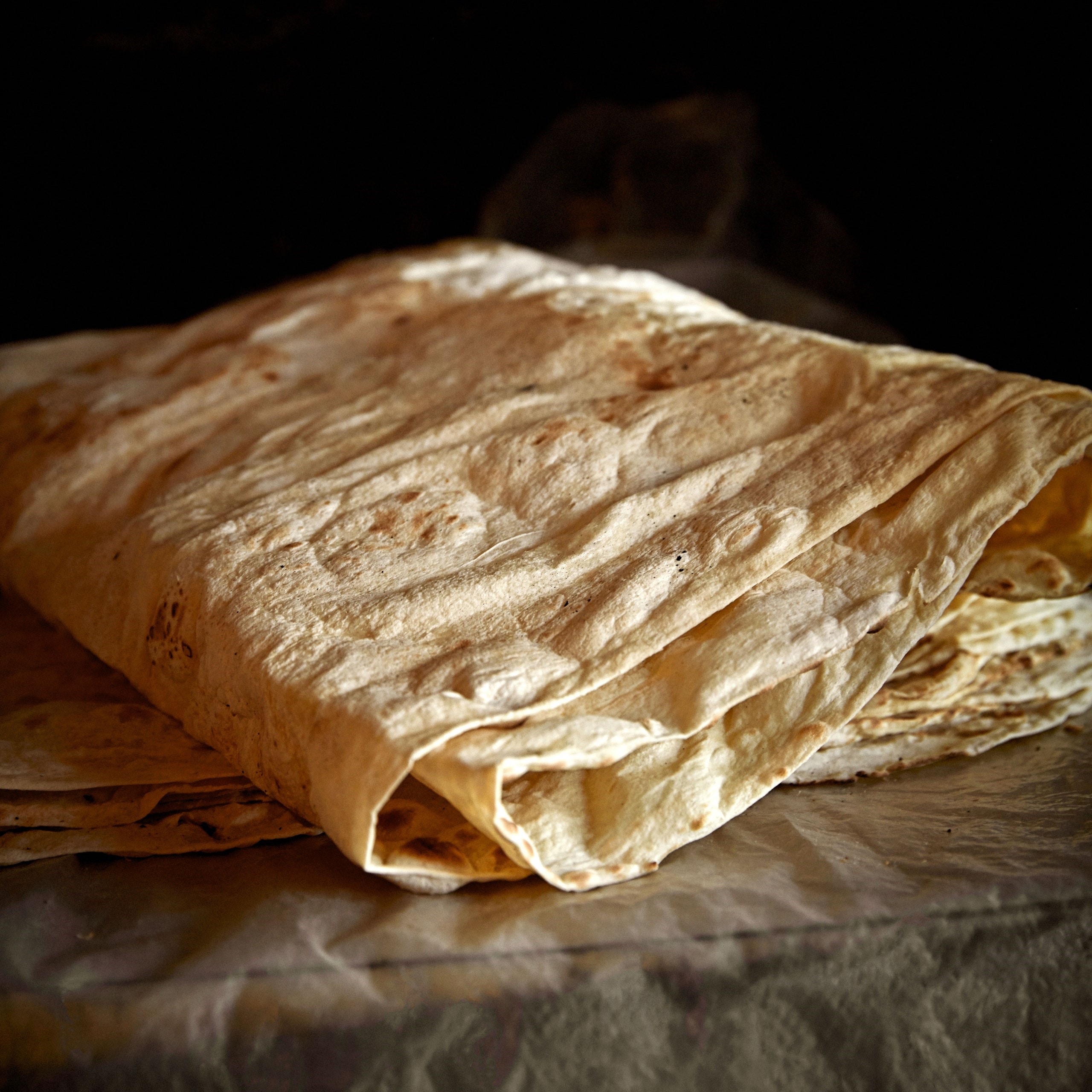MOST PEOPLE AROUND the world likely assume that China’s main carbohydrates are rice and noodles, with bread being seen as a relatively recent import from the west.
But the truth is that there are a number of different breads in the country, and the consumption of wheat can be traced back to some 4,500 years ago. The origin of wheat-eating in China was not the west, but the area now known as the Middle East, or West Asia.
It was thousands of years ago that this import would establish a classic division between items of staple diet in the country – a pattern often known as “north flour, south rice”.
The dish that brought this type of grain to China was known as “lavash”.

Lavash is a paper-thin flatbread usually leavened, baked in a tandoor. Ubiquitous food factories in today’s Middle East still produce lavash in high volumes, like printing newspapers. However, thousands of kilometers away, the Shaanxi Province of China has a famous pastry which looks very similar.
A popular Chinese documentary called Once Upon a Bite (風味人間) reviewed some of the different bread products in China – a number of which are entirely unknown to the world outside China. Below, we summarize some of the findings of the filmmakers.
SHAANXI PEBBLE PANCAKE (石子饃)
Wang Liushi (王六十) sows wheat seeds on his farmland every autumn. The sunshine and temperature at the same altitude as those of Kermanshah always bring big harvests to this land. He grinds the mature wheat into flour the following year, and adds water, eggs and spices to make dough.
Then he heats the smooth peddles to a high temperature in a big pot and puts the slightly leavened flatbread on them. On the surface of the dough, he places pebbles of the same temperature. As soon as steam floats out of the pot, Wang will pull the pastry out of the stone pile.
This is the “pebble pancake”, one of Shaanxi’s most popular snacks and staple food.

The pebbles create natural golden brown “craters” on the pastry surface, spreading the attractive smell of caramelized wheat. And the crispy texture adds flavor to the spices hidden in the dough.
STEAMED BUNS ON HUAIBEI PLAIN
Going down the Yellow River, we find that people living on the Huaibei Plain of Anhui (淮北平原) are good at cooking pastries using steam.
Zhang Tinghu (張庭虎)’s family earn their living by producing and selling steamed buns for generations. Early every morning, he kneads a huge piece of dough with one tip of a stout iron stick and presses with the strength from his whole body on the other, which is his secret of making steamed buns more chewy than ordinary ones. Then he cuts the perfect dough into dozens of sections, flattens each of them, and folds them twice to make a pillow shape.
The leavening duration is another necessary procedure. Without a timer or thermometer, Zhang puts the “pillows” under a fluffy blanket and takes them out at a proper moment. By slightly knocking the surface of the “pillow, ” he can tell the fermentation degree.

While waiting for fermentation, he has heated a pot 1.6 meters in diameter to 90 degrees Celsius. After putting the big leavened buns, which weigh 1.5 kilograms each, in the pot, he can have a 90-minute break.

The steamed buns created by time and steam are smooth and generous. If spread with watermelon soybean paste, a unique seasoning in Huaibei, the steamed bun slices will gain a fine, sweet taste.
GLUTEN’S DIFFERENT DESTINIES
In Fuyang, Zhejiang Province (浙江富陽), many female workers put dough in net basins in front of them, rubbing it with strength as if they are washing clothes. White starch water flows away from the holes of the basin. The only thing left is wheat gluten, also known as “seitan”.

Proficient cooks often fill the gluten dough balls with chopped bamboo shoots, carrots, and chili peppers, then bind them up as spheres. After frying, the texture of the gluten balls tastes more like meat. Wheat gluten is tough and tensile; thus, when people use it to wrap various fillings, they never worry about it breaking or leaking.

However, the starch water thrown away by the Fuyang people, is kept and transforms into a treasure if the dish is made in Cantonese kitchens.
Wheat starch, called “Dengmian” (澄面) by Cantonese people, is made from wheat flour that has had protein removed. Mixed with water, the dough is much smoother and more tender than ordinary flour dough. Cantonese chefs brush a knife with lard, holding the knife horizontally and use the knife surface to lightly draw a circle on the dough into a paper-thin wrapper—not thicker than 0.2 millimeters.

They chop shrimp and vegetables as fillings, put them in the center of the wrapper, and wrap them up in various shapes. The most popular shape is a bunny. But the magic is far from finished.

After about 20 minutes in bamboo steamers, the wrappers become transparent like crystals. The fillings inside the “dumplings” seem to be covered by filmy moonlight. For this reason, the pastries made with wheat starch are usually titled 水晶, or “crystal” in English.
The history of eating in China often shows that it is a creation and re-creation. And next time you travel around China, remember not to assume that your source of carbohydrates will be rice of noodles – and make sure to try some of the country’s bread products.
Image at the top by natsuki/Unsplash
